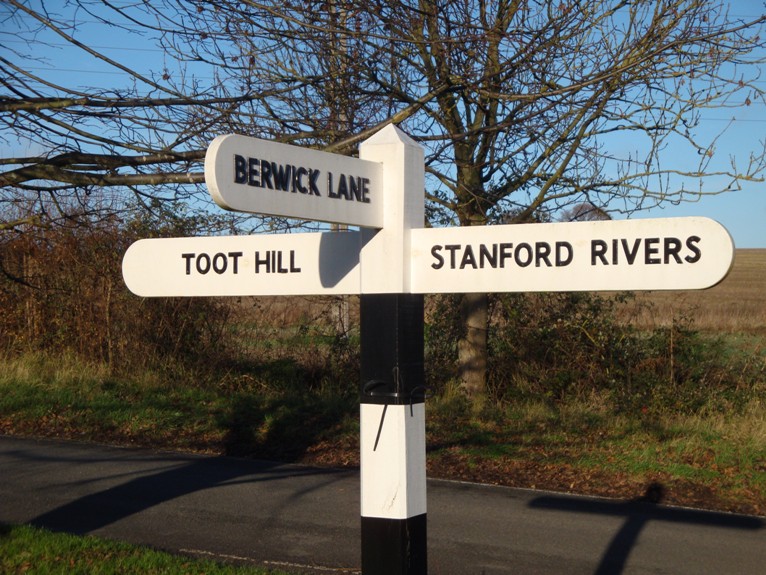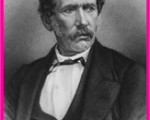THE SCHOOLS OF STANFORD RIVERS
In 1818 there were two day schools in the Parish with 50 pupils: one was housed in a portion of the Old Ongar Union (Piggotts), but it is unclear where the other one was located.
In 1850 a National School was built on what is now known as School Road. The Lord of the Manor, Sir Charles C Smith Bart gave the site and £200, the Board of Education £117, the National Society £20 and other subscriptions were raised. The Rector and Churchwardens were appointed Trustees.
In 1858-9 there were 30 boys and 37 girls enrolled, but much truancy was reported. The school received Parliamentary grants for the training of teachers and for the purchase of equipment. In 1859 the grant was £164, but an Inspector found the standard of education to be low.
In 1870 the register showed 117 children enrolled.
By the Education Act of 1902, the school passed under the administration of the Essex Education Committee, Ongar District.
It was re-organised in 1936 for the education of mixed juniors and infants, the seniors being transferred to the new school at Chipping Ongar.
In May 1952 there were two teachers and 53 pupils: In 1962 the number of pupils had fallen to 20: the school was finally closed in 1965 and the building demolished in 1969. Today the site is taken by the community at Hop Gardens.
SOME ROAD AND PLACE NAMES PAST & PRESENT
Berwick Lane – part also known as Stanley Road
Church Road – also known as Michaels Lane
Coleman’s Lane – also known as Mumford Lane
Creepers Hill – part of Epping Road at top of hill near Does Farm
Mill Lane – also known as Ongar Park Wood Lane
Mutton Row – also known as Greensted Road and Stanford Rivers Road
Nickerlands Lane – opposite Does at Creepers Hill now a Bridleway
Toot Hill Road (opp Green Man) also known as Clatterford End Rd and Ongar Rd
Wash Bridge – at Bridge Farm on London Road
THE FORMER CONGREGATIONAL CHAPEL
In the year 1819 a generous and celebrated non-conformist benefactor, Thomas Wilson, gave a cottage on the main London Road at Little End and arranged for it to be fitted up and opened as a place of worship. Sermons were preached at the opening service by the Rev. James Stratton of Paddington and the Rev. Edward Andrews of Walworth. Arrangements were made for the supply of preachers from Hoxton Academy
. On June 27th 1820 , with further financial assistance from Mr Wilson and some local residents, a new chapel was specially built.
This new chapel seated 300 worshipers. The premises were conveyed to Trustees among whom were Rev. Stratton of Maida Vale and Thomas Kingsbury of Stanford Rivers.
The Essex Incorporate Congregational Union has in its possession a Deed of Lease dated 19th June 1827 ” Thomas Wilson of the first part- Joshua Wilson, John Remington Mills, James Smitherman, Wm Eve, Daniel Dewdney of the second part”. The consideration was 5 shillings and the property consisted of ” Chapel, Vestry, Stable, Outhouse and Land”.
In 1829 the congregation numbered 150 and the Minister was Wm. Temple
In 1839David Livingstone, then a student at Chipping Ongar, was requested to preach in the chapel.
He is said to have suffered from “stage fright” and to have been unable to complete his sermon. He quoted his text and said “Friends, I have forgotten all I had to say” and stepped down from the pulpit!
For the rest of the 19th century the chapel was served by ministers from Chipping Ongar. In 1904 there were 34 Sunday School children with two teachers.
On Sunday, January 2nd, 1927, Mrs Howard Kenniford, who was to have conducted the service, accidentally overturned an oil lamp. Fire spread rapidly and destroyed the building, including a Bible which was originally the property of David Livingstone.
Prior to its destruction the Chapel had been a rectangular stucco building with a pedimented front. After the fire an ambitious scheme of world-wide appeal for funds was made with a view to rebuilding. The appeal for £3000 was not successful and the Church Authorities appointed the Charity Commissioners to be Trustees of the site and fund. No nucleus for a reasonable congregation could be found in the area and ultimately the funds were used for another Chapel in Essex.
The Stanford Rivers Village sign currently stands on the site and the Parish Council placed a commemorative plaque on the wall for the Millenium..
TOOT HILL WINDMILL
Toot Hill once had a windmill. It was built in 1824, but was struck by lightning five years later and the miller was seriously injured.
On Thursday 18th June 1829, a terrible thunderstorm raged over the area of Ongar and Stanford Rivers. As the thunder clouds hovered over Toot Hill windmill there was a “hissing noise and sound like artillery†and then the smell of sulphur. Mrs Rayne, the miller’s wife, was in her cottage when she heard the shrieks of her husband in the mill. She rushed outside to see the mill had been struck by lightning.
Mrs Rayner’s nephew and others came to the rescue and the miller was found on the second floor of the mill. His hair was singed, he had facial injuries and his right leg was almost severed.
[print_gllr id=203]
Mr Potter, the Ongar surgeon, was called for and quickly arrived. He immediately amputated the leg.
It appears that the miller survived the ordeal and a lithograph of the mill’s destruction was sold locally to raise funds for the miller and his family as, no doubt, he was unable to work. A copy of the print can be seen in the Victoria County History Publication: a History of the County of Essex: Volume 4.
As for the mill, it had been struck on the sails cutting two of them off. The lightning then entered the mill demolishing the interior, thrusting two half-hundred weights out through the side of the mill. The roof was blown off, as was the weather boarding on its sides. It was left like a skeleton with its machinery exposed.
The mill was repaired and operated until about 1900. It was demolished in 1935.
Sources: Times 24th June 1829 & History of the County of Essex: volume 4.

